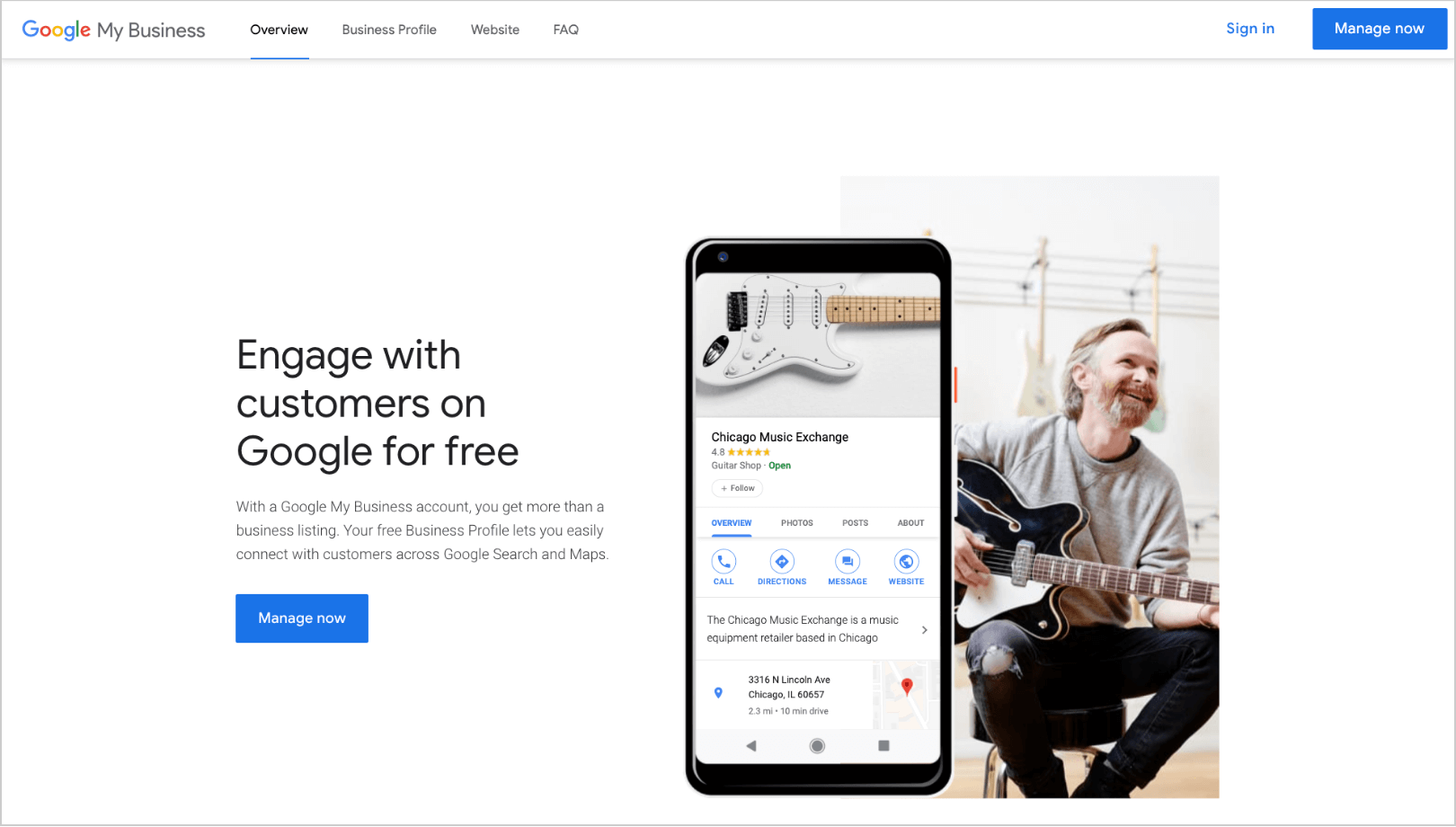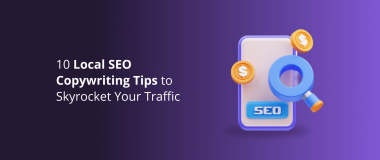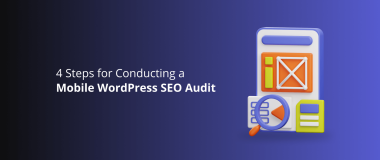SEO is a tough nut to crack.
If you are a small to medium-size business that has a limited budget and resources, it gets even tougher. Yet, local business owners, constrained by time and money, have to make it work somehow. They cannot risk sticking to traditional marketing methods. Big guns in the market will crush them with their optimized tactics and well-rounded promotional strategies.
For such entities, local SEO provides a distinct approach. Over the years, SEO has proven itself to be a powerful tool to make your business visible on the internet. It allows small and medium-sized businesses to put up a strong fight for survival against the tycoons dominating their business niche.
What Is Local SEO?
Local SEO refers to the method of optimizing your presence for the local searches. People may search on various engines. It could be on Google, Apple, Bing, Yelp, etc.
As it is obvious, local SEO allows a business to promote its products to the local audience. The search engine relies on signals like social profile pages, local content, citations, and links to provide relevant results for the user.
Why Do Small and Medium-Sized Businesses Need Local SEO?
You cannot undermine the significance of local SEO for small and medium-sized businesses. Because:
- It offers a high Return on Investment (ROI) as compared to other marketing channels.
- It adds credibility to the business.
- It is crucial for mobile searches, helping them to develop local connections.
Local SEO vs. Organic SEO
Ever since Google Hummingbird appeared in 2013, the search engine has become smarter than ever before. It tends to provide relevant, personalized, and accessible results for every query a user searches. And this is where it is important to acknowledge the difference between organic and local SEO.

The first and major difference is very evident. Local SEO promotes products and services that the customer is looking for, at the exact moment. Then, there is a variance in the primary objective of each optimization strategy.
Organic SEO aims to rank high for specific keywords. Meanwhile, local SEO intends to get into the listing packs. It follows a carefully designed framework to make sure that the business is listed at every place where potential clients are present.
How to Do Local SEO to Boost Your Business?
The following tips will help you understand how to boost your small or medium venture with local SEO:
Optimize for Google My Business
Google My Business was launched in 2014. It is a tool that helps your business meet Google’s needs. If everything falls in place, Google will verify your business. It is likely to reward you with a special sidebar every time someone searches for keywords that align with your services.

You have to fill out some info for your Google My Business profile. Plus, you must make regular updates to this information according to the altering requirements of Google.
There are a few common issues of Google My Business account that are recurring. These issues include Google, mentioning your wrong business address, duplication of your business listing, or your ranking taking a hit due to negative reviews, etc.
In any case, it would be smart to have the services of an expert SEO company up your sleeve to tackle these problems. Also, in the process, you must encourage your customers to review your product/services. It would make your business reliable and trustworthy.
Enhance Internal Links
SEO prodigies know that on-page SEO has to be a constant priority. It refers to the practice of optimizing web pages to earn organic traffic and improve search engine rankings.
Two factors create an impact on your on-page SEO:
- The product/service you offer
- The location where you operate
Apart from this, the most important SEO elements you should focus on include page content, header tags, meta tags, title tags, images, and NAP (name, address, and phone). Make sure that the NAP is consistent all over the web, as this establishes your authority.
Use Long-tail Keywords
Google search now understands the intent of the user much better. Along with this, the increasing trend of voice search has resulted in people typing in specific queries. Like, “What is the best burger place in Utah?”
When you want to improve your rank on the local SEO grid, you must use long-tail keywords in the content. Start by identifying the phrases and questions that potential customers are more likely to ask. Some procedures for finding these keywords include:
- Keyword Research – Find the keywords that fit your product/service category. It should contain phrases or words commonly used by target customers.
- Brainstorming – Think of all the questions your target audience might ask and provide solutions to their possible questions.
- Keyword Segmentation – Create content for different keywords related to the same discussion or possible question.
Using long-tail keywords has become an indispensable part of the SEO of small and medium-sized businesses. It brings high-quality traffic to your website.
These are the people who are much more likely to click the call-to-action (CTA). Besides, when you use specific content, high-intent visitors are more likely to read it. You will receive more inbound links and ultimately crawl up the Google search grid.
Add Location to Your Website
Adopt the practice of having a footer on every page that mentions your address. It is a way to reinforce your locality. It makes sure that the search engine notices the region.
You should also have a detailed location page on your website (if you operate as a brick and mortar store). This will provide visitors with all the necessary bits of information like your phone number, working hours, value propositions, promotions, and reviews from satisfied customers.
Experts believe having a physical store is a factor that will pull up your rankings. According to a Hubspot survey, 50% of local searchers are looking for local business information, such as a physical address.
Provide a detailed guide to people on how they can visit you. For that, adding a Google map to your website is the best option. Insufficient details and lack of physical presence will result in the users tossing your business aside.
Optimize for Mobile Phones

When a website is mobile-friendly, it is responsive. It can easily modify the layout according to the screen size. A study by BrightLocal revealed that 77% of people used a mobile device to search for a local business.
If your site is mobile-friendly, the chances of people entering it are higher. And also, the Google algorithm prioritizes websites optimized for mobile. To see if your website fulfills the requirement, you can use Google’s Mobile-Friendly Test or run a technical SEO audit.
As a small or medium-sized venture, mobile optimization will be the most fruitful strategy you can choose. According to a study by Pew Research, 63 percent of mobile users in America use their phones to access a website.
An Ecoconsultancy report sheds further light on this aspect, denoting that three out of four mobile searches follow up actions like store visit or a phone call.
Remember, a website optimized for different screens is easier to navigate. People will be visiting your portal to look for reviews, contact information, and directions to your store. If the layout doesn’t fit their screen, they won’t take a second before leaving.
Create Locally-Focused Content
Google is increasingly filtering out websites that provide quality content to its visitors and is ranking them higher. It is not about keyword density anymore. Rather, the relevance of the content on the website is of more importance.
So when you target the local community, you have to focus on the topics of their interest. It should not only relate to the motive of promoting your business. Instead, work on how to resolve the pain points of your audience. You can craft content that informs them about the latest developments and new trends.
You can create a variety of content. It can be in the form of videos, blogs, infographics, etc. Distribute this info through diverse channels (preferred by the local audience). You can create authentic and local content by:
- Partnering with social media influencers
- Writing guest posts on famous blogs
- Capitalizing on local events
- Getting yourself featured in local news
Improve Social Media Performance

Social media is a great way to determine how to pan out in the local community. You can scrutinize the activities of the local population and figure out what they want. Check out the trending hashtags, competitor reviews, and the hottest products in demand.
Moreover, it is a platform where you can enhance communication with valued customers. It will allow you to grow fans who would later work as brand advocates. You can also share your Google My Business page on social media. It aligns your social standing with market reputation.
Final Thoughts
SEO is not a magic wand. You can’t expect your sales to take a hike instantly. Perform an SEO audit of your website first and fix the issues that are hurting your business ranking. Next, try incorporating these local SEO tips and keep looking for more.
Do not forget to share with us how it goes.


![Influencer Marketing Statistics Every Business Should Know [Infographic]](https://devrix.com/wp-content/uploads/2019/10/Influencer-Marketing-Statistics-Every-Business-Should-Know-Infographic@2x-380x160.png)


